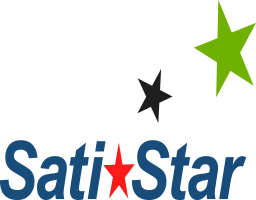Process Innovation
Overview
The first step is to examine your current state processes. The next step is to envision a new future state business process. Our consultants bring their many years of experience with processes across a very wide variety of industries to facilitate this part of the improvement process. This ensures that the changes are not merely evolutionary, but are revolutionary in nature.
Scope And Deliverables
The term innovation may refer to both radical or incremental changes to products, processes or services. The often unspoken goal of innovation is to solve a problem.
In the organizational context, innovation may be linked to performance and growth through improvements in efficiency, productivity, quality, competitive positioning, market share, etc. All organizations can innovate, including for example hospitals, universities, and local governments.
While innovation typically adds value, innovation may also have a negative or destructive effect as new developments clear away or change old organizational forms and practices. Organizations that do not innovate effectively may be destroyed by those that do.
For innovation to occur, something more than the generation of a creative idea or insight is required: the insight must be put into action to make a genuine difference, resulting for example in new or altered business processes within the organization, or changes in the products and services provided.
Types of Innovation:
- Incremental innovation is evolutionary innovation, a step forward along a technology trajectory, or from the known to the unknown, with a high chance of success and low uncertainty about outcomes.
- Radical innovation, on the other hand, involves larger leaps of understanding, perhaps demanding a new way of seeing the whole problem, probably taking a much larger risk than many people involved are happy about. The chances of success are difficult to estimate. There may be considerable opposition to the suggested changes, and often questions about the ethics, practicality or cost of the changes may be raised. People may question if this is, or is not, an advancement of a technology or process.
- Business Model innovation involves changing the way business is done in terms of capturing value e.g. Compaq vs. Dell, hub and spoke airlines vs. Southwest, and Hertz/Avis vs. Enterprise.
- Marketing innovation is the development of new marketing methods with improvement in product design or packaging, product promotion or pricing.
- Organizational innovation involves the creation or alteration of business structures, practices, and models, and may therefore include process, marketing and business model innovation.
- Process innovation involves the implementation of a new or significantly improved production or delivery method.
- Product innovation, involves the introduction of a new good or service that is new or substantially improved. This might include improvements in functional characteristics, technical abilities, ease of use, or any other dimension.
- Service innovation, is similar to product innovation except that the innovation relates to services rather than to products Supply chain innovation where innovations occur in the sourcing of input products from suppliers and the delivery of output products to customers
What We Will Do
- Develop a profound understanding of your existing processes, culture, approach to innovation, leadership styles.
- Provide guidance on how to implement a culture of innovation that is consistent with your existing people.
- Train relevant personnel on specific methodologies for innovation.
- Facilitate a few initial teams through their innovation projects, as a demonstration to the entire organization of the value of the approach.
- Provide on-going guidance to the leadership team on sustaining the cultural change.
What We Need You To Do
- Commit to changing your organizational culture to one of constant innovation.
- Ensure the active participation of the leadership team in the change program.
- Provide us with access to the required internal personnel.
- Authorize those personnel to provide us with the required information in a timely fashion.
- Assign resources as needed.
- Ensure availability of relevant personnel for training and project activities.
WHAT PEOPLE ARE SAYING
SatiStar's Experience Makes The Difference!
